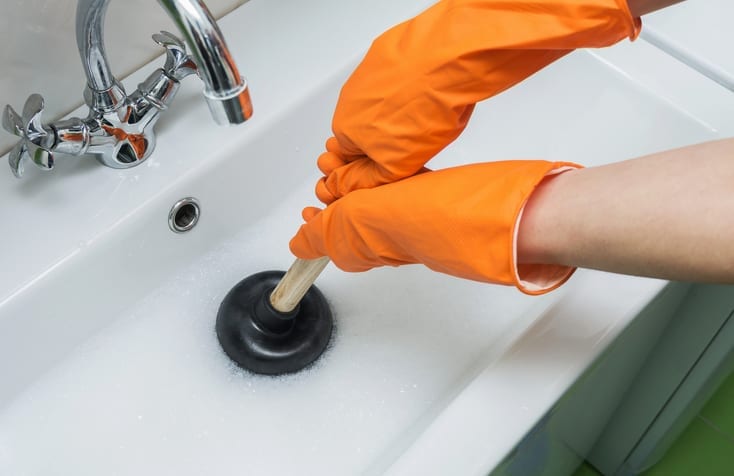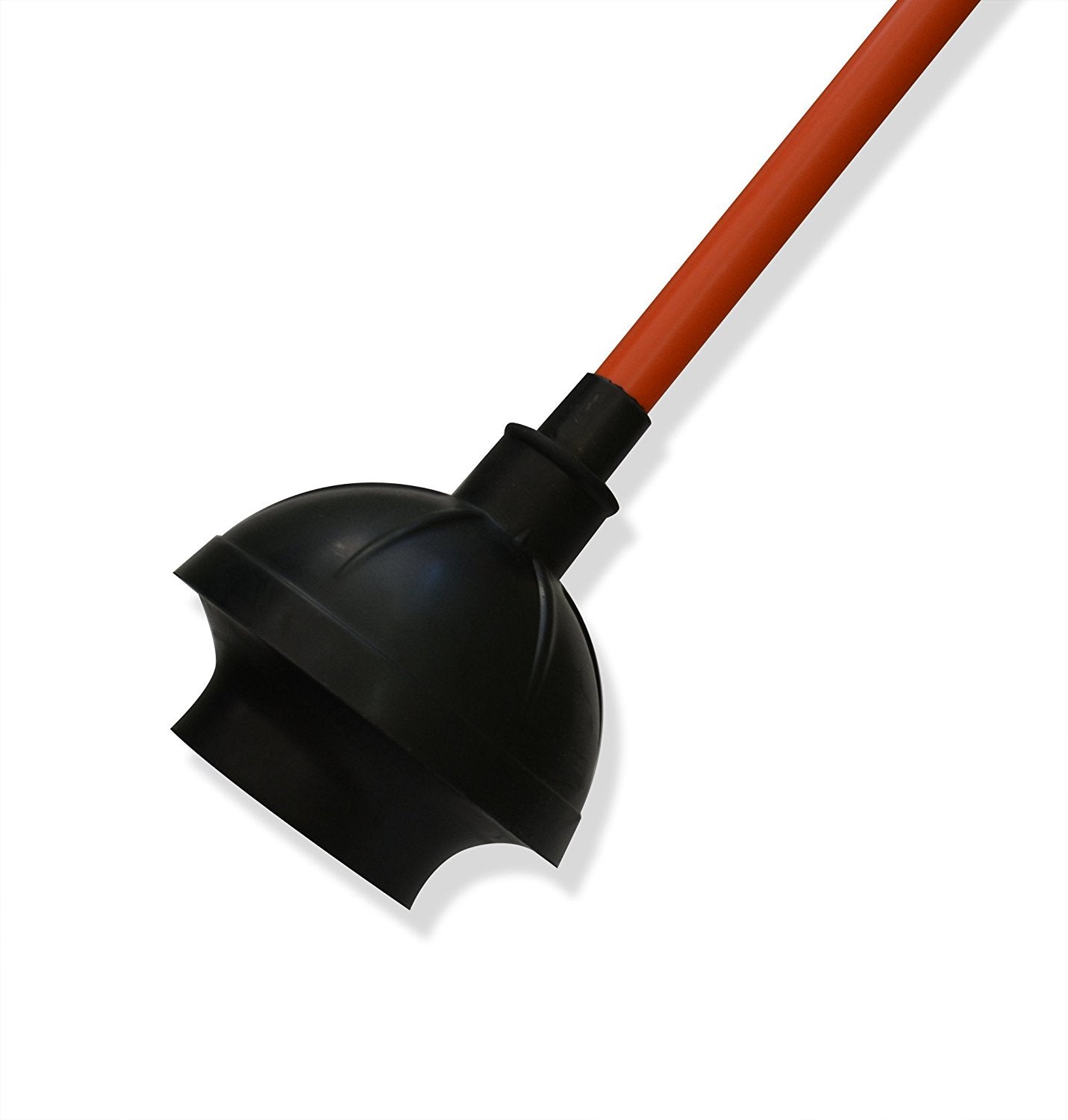Ways to Successfully Apply Plungers and Drain Cleaners: Expert Tips
Ways to Successfully Apply Plungers and Drain Cleaners: Expert Tips
Blog Article
In this article underneath you might get a bunch of good resources all about Tips on How to Effectively Use a Plunger.

Introduction
Proper upkeep of house drains pipes is necessary for stopping blockages and making sure smooth water flow. One of the key devices in every house owner's toolkit is the plunger, alongside numerous drainpipe cleaners made to take on stubborn obstructions successfully. This short article explores exactly how to use bettors and drain cleansers efficiently to maintain your drains streaming easily.
Section 1: Recognizing Plungers
Kinds of Plungers
There are several kinds of plungers offered, each made for different sorts of drains pipes and clogs. The most typical kinds include mug plungers, flange plungers, and accordion plungers.
How Plungers Work
Plungers deal with the principle of producing pressure and suction to displace obstructions. When properly applied over a drainpipe, they develop a vacuum cleaner that can take out debris or break up blockages.
Choosing the Right Bettor
Picking the ideal plunger depends on the sort of drainpipe and the nature of the blockage. Cup bettors are suitable for sinks and tubs, while flange bettors are much better suited for commodes because of their design.
Usual Errors with Plungers
Avoiding these blunders makes sure efficient plunging: improper seal around the drainpipe, inadequate force, and unclear bordering debris.
Area 2: Utilizing Plungers Effectively
Prep work
Before diving, guarantee the bettor covers the drain completely and develops a tight seal. Clear any type of visible debris around the drain opening.
Method
Beginning with gentle plunging motions to construct suction. Rise stress gradually, using a constant rhythm. Repeat as needed till the drainpipe gets rid of.
Repairing Tips
If diving does not work, try adjusting the seal, applying oil jelly for a far better seal, or making use of a various kind of plunger.
Area 3: Recognizing Drainpipe Cleaners
Types of Drainpipe Cleansers
Drain cleansers can be chemical or enzymatic. Chemical cleaners utilize strong chemicals to liquify blockages, while enzymatic cleansers use all-natural enzymes to break down organic matter.
Just How Drain Cleaning Company Work
Chemical cleansers react with blockages to liquify them, while enzymatic cleansers break down natural products like hair and grease without harming pipelines.
Security Considerations
Always put on handwear covers and eye protection when using chemical drainpipe cleaners. Ensure adequate air flow and comply with manufacturer guidelines very carefully.
Eco-Friendly Alternatives
Consider using vinegar and baking soda or enzyme-based cleansers for environment-friendly options that are much safer for pipelines and the setting.
Area 4: Utilizing Drainpipe Cleansers Properly
Application Strategies
Put chemical cleansers straight right into the drainpipe opening. Allow them to work for the suggested time prior to flushing with hot water. Enzymatic cleansers ought to rest over night.
Safety measures
Prevent blending different kinds of cleansers, as this can generate poisonous fumes. Never ever use chemical cleaners along with a bettor, as spilling can take place.
Handling Stubborn Clogs
For consistent blockages, take into consideration making use of a plumbing snake or calling a specialist plumbing professional to stop damages to pipes.
Final thought
To conclude, recognizing exactly how to utilize plungers and drain cleaners effectively is important for maintaining healthy pipes systems. By picking the right devices and methods, home owners can deal with minor blockages and avoid major pipes issues down the line.
How To Properly Use A Plumbing Snake To Clear Drains
When any drain clogs in our home arise, we tend to gravitate toward the plunger and little else. In cases where the plunger and its vacuum-created pressure are not able to clear clogs, many immediately move to harmful chemicals or simply call their plumber to fix the issue.
we’re happy to help with all drain cleaning needs and concerns. This includes informing you on a few other home remedies you may have at your disposal for minor to moderate clogs, one of which is the use of a plumbing snake. Many people have never used one of these before – let’s go over the steps to take when your drain clogs and you have a plumbing snake available.
Attempt Plunger Use
The first step here, as we noted above, should indeed be to grab your plunger when you notice a drain clog and attempt to resolve it this way. If you’re unsure how to use a particular type of plunger, our plumbers can answer any questions you have. If this doesn’t do the trick, however, you move on to the snake.
Locate And Prepare Snake
A plumbing snake is a metal or plastic device that’s generally about a quarter of an inch thick. It’s design with significant extensions, meant to reach down into your clogged drain and push the clog out. Snakes also contain drain augers that will latch onto and push stubborn blockages.
If your plunger doesn’t clear a clog, locate your snake and bring it to the drain in question. We also recommend keeping a bucket nearby to collect the clog once you pull it out, plus we’d advise wearing goggles and possibly protective gloves.
Feed Snake
Once you’re ready to go, feed the snake slowly down the drain, using the crank device it comes with to keep it moving until it finds the clog. Once this happens, much of the clog will be latched onto the coil so you can pull it out, while the rest will simply break up and flow downward.
Detach Debris
Remove the snake slowly from the drain, and once you’ve done so, pick off any debris that’s stuck to the coil. This is another area where wearing gloves is a must.
Flush Drain
Finally, take a few minutes to ensure the snake has done its job correctly. If you’ve been using it on a toilet, flush the toilet a couple times and make sure everything flows well. If you’ve used it on a different drain, flush it with some room temperature water.
https://www.mybuddytheplumber.com/blog/how-to-properly-use-a-plumbing-snake-to-clear-drains/

Application Strategies
Put chemical cleansers straight right into the drainpipe opening. Allow them to work for the suggested time prior to flushing with hot water. Enzymatic cleansers ought to rest over night.
Safety measures
Prevent blending different kinds of cleansers, as this can generate poisonous fumes. Never ever use chemical cleaners along with a bettor, as spilling can take place.
Handling Stubborn Clogs
For consistent blockages, take into consideration making use of a plumbing snake or calling a specialist plumbing professional to stop damages to pipes.
Final thought
To conclude, recognizing exactly how to utilize plungers and drain cleaners effectively is important for maintaining healthy pipes systems. By picking the right devices and methods, home owners can deal with minor blockages and avoid major pipes issues down the line.
How To Properly Use A Plumbing Snake To Clear Drains
When any drain clogs in our home arise, we tend to gravitate toward the plunger and little else. In cases where the plunger and its vacuum-created pressure are not able to clear clogs, many immediately move to harmful chemicals or simply call their plumber to fix the issue.
we’re happy to help with all drain cleaning needs and concerns. This includes informing you on a few other home remedies you may have at your disposal for minor to moderate clogs, one of which is the use of a plumbing snake. Many people have never used one of these before – let’s go over the steps to take when your drain clogs and you have a plumbing snake available.
Attempt Plunger Use
The first step here, as we noted above, should indeed be to grab your plunger when you notice a drain clog and attempt to resolve it this way. If you’re unsure how to use a particular type of plunger, our plumbers can answer any questions you have. If this doesn’t do the trick, however, you move on to the snake.
Locate And Prepare Snake
A plumbing snake is a metal or plastic device that’s generally about a quarter of an inch thick. It’s design with significant extensions, meant to reach down into your clogged drain and push the clog out. Snakes also contain drain augers that will latch onto and push stubborn blockages.
If your plunger doesn’t clear a clog, locate your snake and bring it to the drain in question. We also recommend keeping a bucket nearby to collect the clog once you pull it out, plus we’d advise wearing goggles and possibly protective gloves.
Feed Snake
Once you’re ready to go, feed the snake slowly down the drain, using the crank device it comes with to keep it moving until it finds the clog. Once this happens, much of the clog will be latched onto the coil so you can pull it out, while the rest will simply break up and flow downward.
Detach Debris
Remove the snake slowly from the drain, and once you’ve done so, pick off any debris that’s stuck to the coil. This is another area where wearing gloves is a must.
Flush Drain
Finally, take a few minutes to ensure the snake has done its job correctly. If you’ve been using it on a toilet, flush the toilet a couple times and make sure everything flows well. If you’ve used it on a different drain, flush it with some room temperature water.
https://www.mybuddytheplumber.com/blog/how-to-properly-use-a-plumbing-snake-to-clear-drains/

Hopefully you enjoyed our post about How to Unclog Your Sink with a Plunger. Thank you so much for taking time to read through our blog post. In case you appreciated our page please be sure to share it. We treasure your readership.
Call Today Report this page